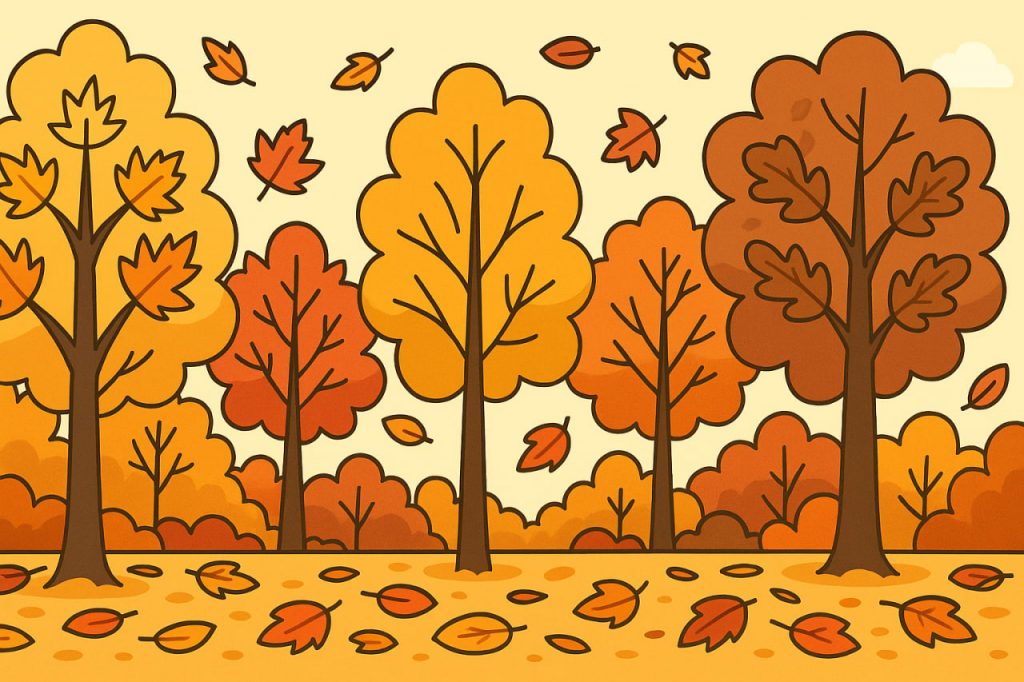During spring and summer, leaves are green because of chlorophyll, the pigment that absorbs sunlight and helps plants make food through photosynthesis. Chlorophyll is continuously produced in warm, sunny seasons, keeping leaves vibrant green.
Seasonal Changes
As days become shorter and temperatures drop in autumn, trees prepare for winter. They gradually stop producing chlorophyll, and the existing pigment breaks down. This allows other pigments in the leaves to become visible.
Other Pigments in Leaves
- Carotenoids: These pigments create yellow and orange colors. They are present in leaves year-round but are masked by chlorophyll during the summer.
- Anthocyanins: These pigments form in autumn and produce red, purple, and crimson hues. They appear when sugars are trapped in the leaf as the tree begins shutting down nutrient flow.
- Tannins: These compounds give leaves their brown shades, especially in oak trees.
Why Different Trees Show Different Colors
The variety of autumn colors depends on the species of the tree, the type and amount of pigments, and the weather conditions. For example, maples are famous for their bright reds, birches often turn yellow, while oaks show more brown.
Weather and Color Intensity
Weather strongly influences autumn colors. Warm sunny days followed by cool, frost-free nights produce the most brilliant reds and purples. Prolonged rain or early frost can dull or shorten the display of colors.
Ecological Purpose
The exact ecological purpose of autumn colors is still debated. Some scientists suggest anthocyanins may protect leaves from light damage and allow trees to recover nutrients more efficiently before shedding leaves.
Conclusion
Leaves turn different colors in autumn due to the breakdown of chlorophyll and the visibility or production of other pigments like carotenoids and anthocyanins. The stunning palette of fall is a natural result of trees preparing for winter rest.
Interesting Facts
As daylight shortens and temperatures drop, trees begin to break down chlorophyll to conserve energy, revealing hidden pigments like carotenoids (yellow and orange) and anthocyanins (red and purple). Interestingly, anthocyanins are not always present — they form in autumn when sugars become trapped in the leaves, especially in sunny days followed by cool nights. The intensity of fall colors depends on factors such as temperature, humidity, and soil nutrients; dry, clear weather often produces the brightest hues. Different species also have unique pigment compositions: for example, maples turn red, birches turn yellow, and oaks become deep brown. These chemical transformations not only create stunning landscapes but also mark an essential step in a tree’s seasonal cycle of renewal.
Glossary
- Chlorophyll – green pigment in plants responsible for photosynthesis.
- Carotenoids – pigments that produce yellow and orange colors in leaves.
- Anthocyanins – pigments responsible for red and purple hues.
- Tannins – compounds giving brown shades to leaves.
- Photosynthesis – process where plants make food using sunlight.
- Pigment – substance that gives color to plant or animal tissue.


